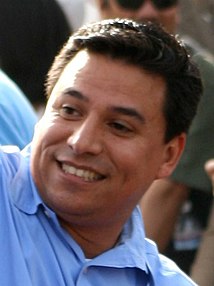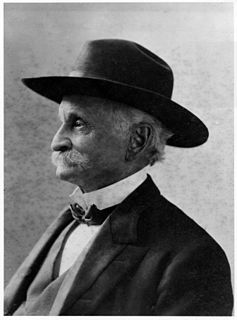
Hollywood is a neighborhood in the central region of Los Angeles, California. Its name has come to be a shorthand reference for the U.S. film industry and the people associated with it. Many of its studios such as Disney, Paramount Pictures, Warner Bros., and Universal Pictures were founded there; Paramount still has its studios there.

Arcadia is a city in Los Angeles County, California, United States, located about 13 miles (21 km) northeast of downtown Los Angeles in the San Gabriel Valley and at the base of the San Gabriel Mountains. It contains a series of adjacent parks consisting of the Santa Anita Park racetrack, the Los Angeles County Arboretum and Botanic Garden, and Arcadia County Park. The city had a population of 56,364 at the 2010 census, up from 53,248 at the 2000 census. The city is named after Arcadia, Greece.

Mount Washington is a historic neighborhood in the San Rafael Hills of Northeast Los Angeles, California. Founded in 1909, it includes the Southwest Museum, the world headquarters of the Self-Realization Fellowship, and Eldred Street, one of the three steepest streets in Los Angeles.
Angelus-Rosedale Cemetery is a cemetery in Los Angeles at 1831 West Washington Boulevard in the Pico-Union district, southwest of Downtown.

Highland Park is a historic neighborhood in northeast Los Angeles, California. It was one of the first subdivisions of Los Angeles, and is inhabited by a variety of ethnic and socioeconomic groups.

Baldwin Hills is a neighborhood within the South Los Angeles region of Los Angeles California. It is home to Kenneth Hahn State Regional Park and to Village Green, a National Historic Landmark. As of end of 2020, Baldwin Hills ranks number two among top 10 richest black communities in US, with an average family income of $157,033, and it has been nicknamed as Black Beverly Hills after black musicians and actors have moved into the area.

Hollywood & Highland is a shopping center and entertainment complex at Hollywood Boulevard and Highland Avenue in the Hollywood district in Los Angeles. The 387,000-square-foot (36,000 m2) center also includes TCL Chinese Theatre and the Dolby Theatre, home to the Academy Awards. The historic site was once the home of the famed Hollywood Hotel. Located in the heart of Hollywood, along the Hollywood Walk of Fame, it is among the most visited tourist destinations in Los Angeles.

José Luis Huizar is a Mexican-American politician and a former member of the Los Angeles City Council. Huizar was arrested and indicted on June 23, 2020, on federal corruption charges.

Elias Jackson "Lucky" Baldwin was "one of the greatest pioneers" of California business, an investor, and real estate speculator during the second half of the 19th century. He earned the nickname "Lucky" Baldwin due to his extraordinary good fortune in a number of business deals. He built the luxury Baldwin Hotel and Theatre in San Francisco and bought vast tracts of land in Southern California, where a number of places and neighborhoods are named after him.

Queen Anne Cottage and Coach Barn is a Victorian style pair of buildings at Baldwin Lake, on the grounds of the Los Angeles County Arboretum and Botanic Garden, located in Arcadia and the San Gabriel Valley of southern California.

Hale House is a Queen Anne style Victorian mansion built in 1887 in the Highland Park section of northeast Los Angeles, California. It has been described as "the most photographed house in the entire city", and "the most elaborately decorated". In 1966, it was declared a Historic-Cultural Monument, and in 1972 it was listed on the National Register of Historic Places. The house was relocated in 1970 to the Heritage Square Museum in Montecito Heights where it remains open to the public.
Rancho La Cienega o Paso de la Tijera was a 4,219-acre (17.07 km2) Mexican land grant in present day Los Angeles County, California given in 1843 by Governor Manuel Micheltorena to Vicente Sánchez. "La Cienega" is derived from the Spanish word cienaga, which means swamp or marshland and refers to the natural springs and wetlands in the area between Beverly Hills and Park La Brea and the Baldwin Hills range.
Otto Guenther Weyse was an American liquor and wine dealer in 19th-century Los Angeles. He was a member of the Los Angeles Common Council and was instrumental in bringing a visiting San Francisco opera company to Los Angeles. He was noted statewide as a man who sent his child to Mexico during a prolonged and "sensational" divorce battle with his French-born heiress wife.

Baldwin Hills/Crenshaw is a neighborhood in the city of Los Angeles within the south region of the city. It is divided between the upscale, principally home-owning Baldwin Hills residential district to the south and a more concentrated apartment area to the north, just south of Jefferson Boulevard. A commercial corridor along Crenshaw Boulevard has the Baldwin Hills Crenshaw Plaza, Marlton Square and Crenshaw Boulevard restaurants.

George A. Smith (1844–1916) was a pioneer resident of Los Angeles, California, a member of its City Council and an unsuccessful candidate for mayor, as well as a Nevada mining speculator.

The Los Angeles and San Gabriel Valley Railroad was a railroad founded on Sept. 5, 1883, by James F. Crank with the goal of bringing a rail line to Pasadena from downtown Los Angeles. Los Angeles and San Gabriel Valley Railroad was sold and consolidated on May 20, 1887 into the California Central Railway. In 1889 this was consolidated into Southern California Railway Company. On Jan. 17, 1906 Southern California Railway was sold to the Atchison, Topeka and Santa Fe Railway and called the Pasadena Subdivision. The main line closed in 1994. The railroad later reopened as the MTA Gold Line Light Rail service in July 2003.

George Smith Patton was an American attorney, businessman and politician who served as Los Angeles County District Attorney and the first mayor of San Marino, California.
Abram M. Edelman (1863–1941) was an American architect from Los Angeles, California. Some of his buildings are listed on the National Register of Historic Places.
Silver Cloud was an American Thoroughbred racehorse bred and raced by "Lucky" Baldwin. He was trained by the prominent African-American Albert Cooper and ridden by the future U.S. Racing Hall of Fame inductee African-American jockey Isaac Murphy.





















